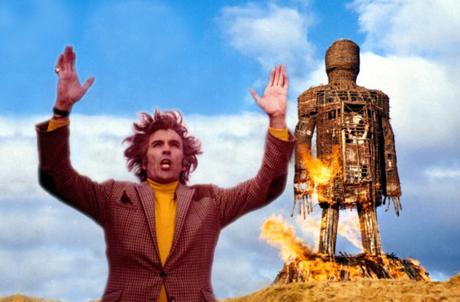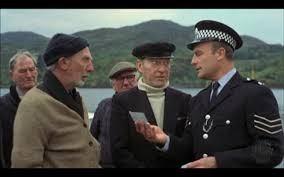Retro Review: 'The Wicker Man'
When a film has been famously hailed as "the Citizen Kane of the horror genre" it has quite a high level of expectations from audiences. Luckily the 1973 horror film The Wicker Man absolutely lives up to its reputation. Adapted from the book Ritual by David Pinner, director Robin Hardy and screenwriter Anthony Shaffer crafted a most unconventional horror movie. One that would lull audiences into a false sense of security (though there is something truly sinister afoot that can not place their fingers on) and slowly building to one of the most terrifying film climaxes in history.

Searching for a missing girl Police Sergeant Neil Howie travels to the island of Summerisle. Living under the benevolent lordship of the charming and charismatic Lord Summerisle, these jolly practitioners of old pagan beliefs are preparing for the approaching May Day celebration. This runs completely contrary to the practices and lifestyle of Sergeant Howie, a devout Christian who is nothing short of stern and serious in his investigation. As he looks for the missing girl, he finds that the people of the island evade his questions and are even mocking of his trying to solve the case. As he delves into the beliefs of the island he begins to uncover that beneath their smiles and sunny dispositions they are planning something horrific for their May Day festivities. Howie discovers that he is merely a part of a larger game as he is intended to be sacrificed by being burned alive within their Wicker Man.
When it comes to the horror genre audiences have become accustomed to a certain dark and spooky style with an atmosphere of suspense. These are all largely absent from the Wicker Man, as soon as Sergeant Howie he is greeted by a cheerful and carefree permissive community. They engage in nature-based pagan rituals, singing folk songs, having sex in open fields and just having the most fun they can out of life. Even British horror icons Christopher Lee and Ingrid Pitt are playing joyous characters. Therein lies the horrors of the film as we see Lord Summerisle and his people partaking evil with a spiritually charged glee. They regard what they do to appease their god and goddess as something no different than a Christian sitting in their pew on a Sunday only with more excitement, costumes, and folk music. Director Robin Hardy truly draws on the trendiness of the rock n' roll and New Age lifestyles which were emerging during this era. By now the traditional occult elements of horror had become familiar to audiences thanks to the success of the Hammer Horrors, so Hardy sought to flip these tropes on their heads. This contrast to the style of horror films moviegoers were used to is what drew in Christopher Lee who was a friend of screenwriter Anthony Shaffer. We should count ourselves lucky that this project appealed to the legendary actor as Lee turns in one of the finest performances of his storied career. Actresses Ingrid Pitt, Britt Ekland, and Diane Cilento all do incredible work adding to his screen presence while at the same time proving more than capable of owning every scene they are in on their own.

Further moving against horror tradition in the Wicker Man was its characterization of the protagonist Sergeant Neil Howie. In the face of these exuberant people he comes across as particularly stiff and strict, like a mean old schoolteacher cracking down on the fun of the students. He never wastes a chance to ridicule or lecture the people of Summerisle and brag about his spiritual superiority as a Christian. He may be the "hero" of the film but he is downright unlikable and hard for the audience to truly root for. That being said he is clearly an outsider among this community which is something we can all relate to. Amplifying this feeling of alienation is that fact that cinematographer Harry Waxman shoots the film with the superficial sheen of a travelogue, giving the island an artificiality hiding something just beneath the surface. As the movie moves forward we realize more and more the danger he is truly in. By the time May Day comes and the townsfolk are dancing around in their costumes, our primal empathy is begging for him to find a way off the island. But once we finally get sight of the thatched together Wicker Man looming ominously on the countryside we know it is too late and we can only wait in the grips of horror as he faces a horrifying fate.
The Wicker Man is a true masterpiece of horror easily regarded as one of the finest films ever produced in Britain. It broke the established rules of the genre and in the process became a terror never before seen on the big screen. A clash between a modern conservative man of the law and hedonistic people who embrace their pagan roots with open arms. In an era of Sgt. Pepper, Toni Arthur, Man, Myth & Magic magazine, and a resurgence of the likes of Aleister Crowley and other occultist, this resonated with the British culture. This is a movie which will linger with the audience well after the credits roll and the nightmare is over.

